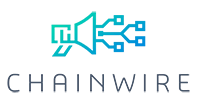Latest News
Seeking Alpha
 2022-12-08 17:30:00
2022-12-08 17:30:00
Tumultuous Times: Crypto Market Setbacks And Recoveries
Summary All major U.S. crypto lenders - Blockfi, Genesis, Voyager and Celsius - have now suspended withdrawals and are either in bankruptcy or negotiating privately with creditors. There’s been a record withdrawal of BTC from centralized exchanges to cold wallets. Thus, liquidity in the market has dried up, with the top 5 crypto exchanges facilitating $4B/day in volumes at month-end, down from $8B at the start of the month. Notably, DEX share of crypto volumes rose materially in the month. Still, even DeFi is struggling to match orders efficiently. Though, the fact that Ethereum did not make a new low in price in the face of the most negative news of the year (i.e., FTX) is somewhat bullish. November marked an incredibly tumultuous month for digital assets. Despite this, Ethereum did not make a new low in price, offering a possible glimmer of some positivity. It’s hard to believe that November was only the fourth-worst month of the year for Bitcoin ( BTC-USD ) and Ethereum ( ETH-USD ), measured by price return, but such is the sorry state of digital assets price action year-to-date. All major U.S. crypto lenders - Blockfi, Genesis, Voyager and Celsius ( CEL-USD ) - have now suspended withdrawals and are either in bankruptcy or negotiating privately with creditors. Meanwhile, Bitcoin miners with Texas exposure, including Compute North, Genesis, Iris Energy ( IREN ), Argo Blockchain ( ARBK , ARBKF ), Applied Digital ( APLD ), and Core Scientific ( CORZ ), have all either defaulted on loans or have signaled risks as a "going concern." Publicly traded miners continue to sell more than 100% of the Bitcoin they mine, as they have since June, based on public filings. In Canada, Hydro-Quebec and the province of Manitoba moved closer towards enforcing Bitcoin mining moratoriums; NY governor Kathy Hochul also signed a two-year halt on fossil-fuel based proof of work mining. We also observe a record withdrawal of BTC from centralized exchanges to cold wallets. Thus, liquidity in the market has dried up, with the top 5 crypto exchanges facilitating $4B/day in volumes at month-end, down from $8B at the start of the month. Notably, DEX share of crypto volumes rose materially in the month. Still, even DeFi is struggling to match orders efficiently, as flagship lender Aave ( AAVE-USD ) faced a market manipulation attack that left the protocol with a small amount of bad debt and led to the halting of lending for 17 different Ethereum-based tokens on Aave. For November, the Nasdaq Composite rose 5%, Bitcoin -17%, Ethereum -18%, and the MVIS CryptoCompare, Smart Contract Leaders Index, -27%. On a hopeful note, the fact that Ethereum did not make a new low in price in the face of the most negative news of the year (i.e., FTX ( FTT-USD )) strikes us as somewhat bullish. Additionally, FTX’s leaked balance sheet pre-bankruptcy revealed that $2B of the “hole” was BTC-USD and ETH-USD purportedly owned by clients but loaned to Alameda and ultimately frittered away. Debtors will need to raise BTC-USD and ETH-USD to satisfy creditors before they consider selling these assets for cash. Crypto obituary writers this week, including the FT and the ECB, will be wrong for the simple reason that FTX’s bankruptcy may take a decade to resolve. Digital Asset Market Cap 7 Days 30 days 90 days 365 days Bitcoin $329.74B 3.53% -16.57% -13.98% -69.99% Ethereum $157.43B 6.98% -17.50% -18.14% -71.88% Digital Asset Index Market Cap 7 Days 30 days 90 days 365 days MVIS ® CryptoCompare Infrastructure Application Leaders $14.43B 4.73% -8.83% 0.10% -75.96% MarketVector™ Centralized Exchanges $51.74B 0.46% -13.90% -1.48% -60.45% MVIS ® CryptoCompare Decentralized Finance Leaders $6.76B 4.53% -21.32% -26.42% -80.75% MVIS ® CryptoCompare Smart Contract Leaders $194.45B 1.80% -26.81% -30.80% -83.69% MVIS ® CryptoCompare Media & Entertainment Leaders $4.48B 4.05% -27.42% -35.35% -91.71% (Sources: Bloomberg, Messari, CryptoCompare, MVIS, VanEck research as of 11/30/2022) Past performance is indicative of future results. Not a recommendation to buy or sell any of the names mentioned herein. Smart Contract Platforms Ethereum outperformed other layer 1 smart contract platforms in November, led by strong user adoption of layer 2 protocols such as Abitrum, Optimism ( OP-USD ), and Polygon ( MATIC-USD ) on the Ethereum network. Arbitrum specifically captured 625k active users in November, up 100% in the last three months. Daily active users of those three L2s have grown by 69% over the last three months, compared to -5% for Cardano ( ADA-USD ), -6% for Ethereum, -22% for Avalanche ( AVAX-USD ), and -48% for Solana ( SOL-USD ). Ethereum continues to monetize L2 activity successfully with its new post-merge economics, generating $87M in fee revenue this month amidst declining ETH supply. However, ETH’s share of smart contract platform network fees has been falling in recent months, from nearly 90% in mid-year to 75%, as the L2s pick up some share. Still, as of this month, Ethereum became the first profitable open-source blockchain, with gas fees paid to the Ethereum network outpacing costs (block reward issuance). We consider this a remarkable accomplishment for an open-source blockchain which will hopefully provide valuation support, should it continue. Dev Activity Solana Ethereum Polkadot Cardano Avalanche Tron Cosmos Near Algorand 30D 30.07% 124.98% 9.48% 17.42% 84.71% 178.99% 74.29% -11.23% -34.64% 90D -17.28% 5.68% 40.82% 10.76% 15.58% 263.21% 62.33% 2.73% -64.46% YTD -62.42% 55.79% 89.08% 99.45% 353.49% 1183.33% 170.93% 50.53% -30.50% Dev Count Growth Solana Ethereum Polkadot Cardano Avalanche Tron Cosmos Near Algorand 30D -43.50% 15.41% 5.70% -9.44% -17.86% -11.63% -3.67% -27.86% -43.52% 90D -49.10% -2.65% 25.00% -2.42% -33.65% 52.00% -14.18% -22.04% -52.71% YTD -87.85% 19.16% 80.89% 38.49% 35.29% 245.45% 47.50% 22.88% -31.46% (Sources: Santiment, VanEck Research as of 11/30/2022) Past performance is indicative of future results. Not a recommendation to buy or sell any of the names mentioned herein. Meanwhile, Solana has struggled with user growth following the collapse of FTX, with the native SOL token losing 58% in November and the number of developers touching Solana code declining by 44%, according to VanEck analysis of Santiment data. Still, Solana developer activity , measured by commits, pull requests, comments, and other actions, rose 30% in November. Developer participation almost certainly follows a Pareto principle common to many networks, so it’s possible that Solana just lost the tail. Thus, given that FTX/Alameda owned just 8% of fully diluted Solana, and considering Solana NFT volumes have been quite strong in recent months, we consider the sell-off to be an overreaction. On the other hand, we also note that Avalanche launched a Rust-based SDK (software development kit), opening a new door for Solana developers looking for a new home. DeFi DeFi volumes soared in November, reaching $100B, a 100% increase from October. On the other hand, total value locked (TVL) in DeFi has fallen 25%, with some chains faring much worse depending on proximity to the FTX debacle. Solana was hit the hardest by the fallout, with TVL on the chain decreasing 70% to $282 million. The Solana DeFi ecosystem was heavily intertwined with FTX, since the exchange had facilitated many of the funding rounds for Solana flagship DeFi projects such as Serum, which saw its TVL evaporate from over $100 million to under $1 million throughout the month. Additionally, FTX was supposed to be holding the assets backing Sollet tokens, which are tokenized versions of assets from foreign chains such as soBTC. When it became clear from leaked reports that FTX held no BTC, the Sollet assets de-pegged and are now worth a small fraction of the assets they were supposed to be pegged to. November TVL Top 10 Blockchains (Source VanEck, DefiLlama as of 11/30/2022) Past performance is indicative of future results. Not a recommendation to buy or sell any of the names mentioned herein. The drop in token price and liquidity has created an environment where large token holders can “liquidation hunt” in DeFi by deploying large amounts of capital in an attempt to liquidate on-chain lending positions. Avraham Eisenberg (Avi) is one of the key players in this arena who became infamous after he single-handedly exposed and profited from vulnerabilities in Solana-based derivatives platform, Mango Markets. Most recently, Avi launched a strategy on the Aave lending protocol to liquidate the founder of Curve ( CRV-USD ), who had a $48 million position that would be liquidated if the price of CRV-USD fell below $0.26. Over a week, Avi built up a $100 million position on Aave by lending an initial $40 million USDC-USD and using a popular DeFi method of leveraging known as looping, in which he borrowed CRV-USD, swapped it for USDC-USD, and deposited the USDC-USD to his original lending position, rinse and repeat. Combined with the tumultuous crypto market, the constant sell pressure from Avi drove the price of CRV-USD from $0.60 to $0.40. Since Avi was borrowing so much CRV-USD, the lending rate to deposit CRV-USD on Aave rose to over 300%. This created the opportunity for a relatively easy trade to keen market participants whereby they could lend CRV-USD on Aave and short CRV-USD on a perpetual futures exchange like KuCoin or Binance, effectively arbitraging the rates until the mayhem subsided. Once other actors in the market caught on to what was happening, they stepped in and bought the cheap CRV-USD and short-squeezed Avi’s position, sending the price of CRV-USD to almost $0.75 and liquidating Avi’s USDC-USD collateral. Due to the slippage incurred by the liquidation, Aave was left with $1.6 million of bad debt in their Curve lending market, which is easily manageable considering their $200 million safety module but highlights the risk that large liquidations in less liquid markets pose for the protocol. Hence, Aave governance has overwhelmingly voted to temporarily freeze 17 volatile Ethereum-based markets on the platform, including Curve ((CRV-USD)), Maker ( MKR-USD ), and yearn.finance ( YFI-USD ). Avi’s trades on Mango Markets and now Aave has sparked debate in the DeFi community as to whether these actions are considered an exploit of the protocol, or rather “highly profitable trading strategies,” the term Avi prefers when describing his methods in DeFi. Going forward, it wouldn’t surprise us if we see further stress tests on lending protocols as the cost to engage in “highly profitable trading strategies” on DeFi projects trends down with the market. Despite this high-profile hiccup, most ETH-based borrow/lend protocols and automated market makers (AMMs) continue to function normally. Overall, the DEX share of total crypto trading rose from 11% to 16% in November. Aave protocol, which dominates ETH-based lending protocols with nearly 90% market share, just saw daily active users hit an all-time high (of 11k per day), even with total loans down 80% from the peak to $1.6B. Metaverse Blockchain gaming activity fell by 9% in November based on the 25 games we track weekly. Despite the lackluster user activity in the month, blockchain games are still on pace to close $9B in VC funding this year, up from $4B in 2021, though Q3 game funding fell sharply from Q2. As an example, Game7, a BitDAO-backed gaming accelerator, announced $100 million in grants for open-source Web3 startups in November. Among metaverse platforms, Decentraland ( MANA-USD ) hosted their Metaverse Music Festival this month and saw a brief uptick in users on the platform to 14k. Still, we think the number of daily active users fails to justify the $MANA token’s $700 million market cap. On the Otherside of metaverse news, Ape DAO has finalized the release of staking for the APE-USD token. Starting December 7th, investors will be able to stake their APE-USD tokens on the platform created by Horizon Labs. By staking APE-USD and a BAYC/MAYC/BAKC, NFT holders will be able to earn bonus staking yields around 340-480% APY according to early estimates. The APE-USD token has since rallied 60% from its all-time low of $2.60 to its trading price today, around $4.18. Unless there are any major announcements for the Otherside , the token may face increased selling pressure in December and Q1 2023 from investors selling off staking rewards. Note that Ape staking will not be available to users in the United States, Canada, North Korea, Syria, Iran, Cuba, Russia, Crimea, Donetsk, and Luhansk. Disclosures Sources: Bloomberg, ultrasound.money, Santiment, DefiLlama, TheBlock, Aave Companies, DappRadar, CBInsights, CryptoSlam.io, Dune Analytics, Messari, Delphi Digital, Coindesk, Decrypt, TheTie, VanEck research. Index Definitions Index returns assume reinvestment of all income and do not reflect any management fees or brokerage expenses associated with fund returns. Returns for actual fund investors may differ from what is shown because of differences in timing, the amount invested and fees and expenses. You cannot invest directly in an index. MVIS CryptoCompare Smart Contract Leaders Index : designed to track the performance of the largest and most liquid smart contract assets, and is an investable subset of MVIS CryptoCompare Smart Contract Index. MVIS CryptoCompare Infrastructure Application Leaders Index : Designed to track the performance of the largest and most liquid infrastructure application assets, and is an investable subset of MVIS CryptoCompare Infrastructure Application Index. MVIS CryptoCompare Decentralized Finance Leaders Index : Designed to track the performance of the largest and most liquid decentralized finance assets, and is an investable subset of MVIS CryptoCompare Decentralized Finance Index. MVIS CryptoCompare Media & Entertainment Leaders Index : designed to track the performance of the largest and most liquid media & entertainment assets, and is an investable subset of MVIS CryptoCompare Media & Entertainment Index. The MarketVector™ Centralized Exchanges Index (MVCEX) is designed to track the performance of assets classified as ‘Centralized Exchanges. Nasdaq Composite Index: measures all Nasdaq domestic and international based common type stocks listed on The Nasdaq Stock Market. The S&P 500 ® is widely regarded as the best single gauge of large-cap U.S. equities. Coin Definitions Bitcoin ((BTC-USD)) is a decentralized digital currency, without a central bank or single administrator, that can be sent from user to user on the peer-to-peer bitcoin network without the need for intermediaries. Ethereum ((ETH-USD)) is a decentralized, open-source blockchain with smart contract functionality. Ether is the native cryptocurrency of the platform. Amongst cryptocurrencies, Ether is second only to Bitcoin in market capitalization. Celsius Network ((CEL-USD)) is a leading retail savings platform for interest-bearing and borrowing accounts with fiat on-ramp, as well as a market-leading CeFi lending provider. Aave ((AAVE-USD) is an open-source and non-custodial protocol to earn interest on deposits and borrow assets with a variable or stable interest rate. Optimism ((OP-USD)) is a layer-two blockchain on top of Ethereum. Optimism benefits from the security of the Ethereum mainnet and helps scale the Ethereum ecosystem by using optimistic rollups. Polygon ((MATIC-USD)) is the first well-structured, easy-to-use platform for Ethereum scaling and infrastructure development. Its core component is Polygon SDK, a modular, flexible framework that supports building multiple types of applications. Cardano ((ADA-USD)) is an open-source, smart-contract platform that aims to provide multiple features through layered design. Solana ((SOL-USD)) is a public blockchain platform. It is open-source and decentralized, with consensus achieved using proof of stake and proof of history. Its internal cryptocurrency is SOL. Avalanche ((AVAX-USD)) is an open-source platform for launching decentralized finance applications and enterprise blockchain deployments in one interoperable, scalable ecosystem. Tron ( TRX-USD ) is a multi-purpose smart contract platform that enables the creation and deployment of decentralized applications. Cosmos ( ATOM-USD ) is a cryptocurrency that powers an ecosystem of blockchains designed to scale and interoperate with each other. NEAR Protocol ( NEAR-USD ) is a decentralized development platform that uses a Proof-of-Stake (PoS) consensus mechanism and will eventually feature a sharded architecture to scale transaction throughput. Algorand ( ALGO-USD ) is a scalable, secure, and decentralized digital currency and smart contract platform. Its protocol uses a variation of Proof-of-Stake (PoS) called Pure PoS (PPoS) to secure the network and reach consensus on block production. Serum (SRM) is a decentralized exchange ((DEX)) built on the Solana blockchain by Serum Foundation; the foundation was created by FTX and Alameda Research. Curve Finance ((CRV-USD)) is a decentralized exchange optimized for low slippage swaps between stablecoins or similar assets that peg to the same value. The protocol employs a Automated Market Maker that was built specifically to give DeFi users low slippage and liquidity providers steady fee revenue. USD Coin ((USDC-USD) is a stablecoin that is pegged to the U.S. dollar on a 1:1 basis. Maker ((MKR-USD)) is the governance token of the MakerDAO and Maker Protocol - respectively a decentralized organization and a software platform, both based on the Ethereum blockchain - that allows users to issue and manage the DAI stablecoin. yearn.finance ((YFI-USD)) is a decentralized asset management platform that has multiple uses ranging from liquidity provision, lending, to insurance. The most prominent product in its ecosystem is Vaults which maximize users' yields by through various yield farming strategies proposed by the community. Decentraland ((MANA-USD)) is building a decentralized, blockchain-based virtual world for users to create, experience and monetize content and applications. ApeCoin ((APE-USD)) is a governance and utility token that grants its holders access to the ApeCoin DAO, a decentralized community of Web3 builders. In addition to participating in ApeCoin governance, token holders can purchase products and services, and pay for in-game assets in play-to-earn games like Benji Bananas by Animoca Brands. Elrond (EGLD) is a blockchain protocol that seeks to offer extremely fast transaction speeds by using sharding. An investment in the strategy is subject to risks which include, among others, regulatory, general investment and trading, opaque spot market, digital assets, digital asset exchanges, investing through DEXes, stablecoin, OTC transactions, valuation and liquidity, cryptocurrencies lending, digital asset lending and borrowing, DeFi lending of digital assets, digital asset lending programs offered by certain CeFi and DeFi exchanges, rebasing of digital assets, credit, credit market illiquidity, third party wallet providers, loss of private key, volatility and speculative nature of digital assets trading, digital asset network protocols and software, digital asset network malicious actors, forks and airdrops, digital asset miners ceasing operations, cybersecurity, computer malware and viruses, data loss, incorrect transfer of digital assets, initial coin/pre-sale initial coin offering, synthetic investments, options, futures, forwards, lack of blockchain company operating history, blockchain company failure, short selling, leverage, limited diversification, non-U.S. securities, and counterparty risks. The views and opinions expressed are those of VanEck. Fund manager commentaries are general in nature and should not be construed as investment advice. Opinions are subject to change with market conditions. Any discussion of specific securities mentioned in the commentaries is neither an offer to sell nor a solicitation to buy these securities. Cryptocurrency is a digital representation of value that functions as a medium of exchange, a unit of account, or a store of value, but it does not have legal tender status. Cryptocurrencies are sometimes exchanged for U.S. dollars or other currencies around the world, but they are not generally backed or supported by any government or central bank. Their value is completely derived by market forces of supply and demand, and they are more volatile than traditional currencies. The value of cryptocurrency may be derived from the continued willingness of market participants to exchange fiat currency for cryptocurrency, which may result in the potential for permanent and total loss of value of a particular cryptocurrency should the market for that cryptocurrency disappear. Cryptocurrencies are not covered by either FDIC or SIPC insurance. Legislative and regulatory changes or actions at the state, federal, or international level may adversely affect the use, transfer, exchange, and value of cryptocurrency. Investing in cryptocurrencies comes with a number of risks, including volatile market price swings or flash crashes, market manipulation, and cybersecurity risks. In addition, cryptocurrency markets and exchanges are not regulated with the same controls or customer protections available in equity, option, futures, or foreign exchange investing. There is no assurance that a person who accepts a cryptocurrency as payment today will continue to do so in the future. Investors should conduct extensive research into the legitimacy of each individual cryptocurrency, including its platform, before investing. The features, functions, characteristics, operation, use and other properties of the specific cryptocurrency may be complex, technical, or difficult to understand or evaluate. The cryptocurrency may be vulnerable to attacks on the security, integrity or operation, including attacks using computing power sufficient to overwhelm the normal operation of the cryptocurrency’s blockchain or other underlying technology. Some cryptocurrency transactions will be deemed to be made when recorded on a public ledger, which is not necessarily the date or time that a transaction may have been initiated. Investors must have the financial ability, sophistication and willingness to bear the risks of an investment and a potential total loss of their entire investment in cryptocurrency. An investment in cryptocurrency is not suitable or desirable for all investors. Cryptocurrency has limited operating history or performance. Fees and expenses associated with a cryptocurrency investment may be substantial. VANECK ABSOLUTE RETURN ADVISERS CORPORATION (‘VEARA”), THE INVESTMENT MANAGER OF THE STRATEGY, IS A MEMBER OF NFA AND IS SUBJECT TO NFA'S REGULATORY OVERSIGHT AND EXAMINATIONS. VEARA HAS ENGAGED OR MAY ENGAGE IN UNDERLYING OR SPOT VIRTUAL CURRENCY TRANSACTIONS IN THE STRATEGY. ALTHOUGH NFA HAS JURISDICTION OVER VEARA, YOU SHOULD BE AWARE THAT NFA DOES NOT HAVE REGULATORY OVERSIGHT AUTHORITY FOR UNDERLYING OR SPOT MARKET VIRTUAL CURRENCY PRODUCTS OR TRANSACTIONS OR VIRTUAL CURRENCY EXCHANGES, CUSTODIANS OR MARKETS. YOU SHOULD ALSO BE AWARE THAT GIVEN CERTAIN MATERIAL CHARACTERISTICS OF THESE PRODUCTS, INCLUDING LACK OF A CENTRALIZED PRICING SOURCE AND THE OPAQUE NATURE OF THE VIRTUAL CURRENCY MARKET, THERE CURRENTLY IS NO SOUND OR ACCEPTABLE PRACTICE FOR NFA TO ADEQUATELY VERIFY THE OWNERSHIP AND CONTROL OF A VIRTUAL CURRENCY OR THE VALUATION ATTRIBUTED TO A VIRTUAL CURRENCY BY VEARA. There may be risks posed by the lack of regulation for cryptocurrencies and any future regulatory developments could affect the viability and expansion of the use of cryptocurrencies. Investors should conduct extensive research before investing in cryptocurrencies. Information provided by Van Eck is not intended to be, nor should it be construed as financial, tax or legal advice. It is not a recommendation to buy or sell an interest in cryptocurrencies. NFTs are not an investment. Rather, NFTs are digital memorabilia intended solely for entertainment purposes. As entertainment memorabilia given to you as a gift, NFTs have no value and are not intended by VanEck to ever have any value. Neither VanEck nor anyone else will take or not take any current or future action that is designed in any way to maintain the value of the NFTs, or to cause their value to grow or increase. You must not attempt to obtain an NFT from VanEck if you view it as an investment. © Van Eck Securities Corporation, Distributor, a wholly owned subsidiary of Van Eck Associates Corporation. Original Post Editor's Note: The summary bullets for this article were chosen by Seeking Alpha editors.
Donate BTC
Get Crypto Newsletter
Our monthly newsletter contains news, updates and exclusive bonus opportunities. You may unsubscribe at any time.







